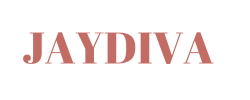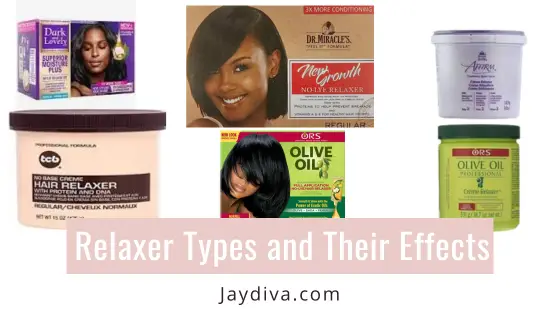Hey there, fellow relaxed hair enthusiasts! If you’re on a relaxed hair care journey, you know that choosing the right relaxer type is crucial for achieving and maintaining healthy, beautiful tresses. As someone who has personally explored various relaxer options, I’m excited to share my knowledge and experiences with you. So, let’s dive in and discover the different types of relaxers and their effects on our precious locks!
Table of Contents
Common Relaxer Types
1. Lye Relaxers
Lye relaxers are known for their powerful straightening abilities. They contain sodium hydroxide, which is a highly alkaline compound. Lye relaxers have a high pH level, allowing them to break down the protein structure of your hair and create a permanent straightening effect.
However, it’s important to use lye relaxers carefully as they can be harsh on your scalp and hair, especially if not used correctly. They may not be the best choice if you have a sensitive scalp.
Product Recommendations
2. No-Lye Relaxers
If you’re looking for a milder option, no-lye relaxers could be the way to go. They come in two forms: calcium hydroxide relaxers or guanidine hydroxide relaxers. No-lye relaxers have a lower pH level compared to lye relaxers, making them less harsh on your hair and scalp.
They are often recommended for individuals with sensitive scalps. Typically, no-lye relaxers are available as a two-component system, where you mix the activator with the relaxer just before applying it.
Product Recommendations
Thio Relaxers
Ammonium thioglycolate relaxers, also known as thio relaxers, are typically used for more specialized purposes, such as texturizing or loosening curls. Thio relaxers work by breaking down the hair’s disulfide bonds, altering its natural curl pattern.
They are less potent than lye relaxers, making them a preferred option for those seeking a more subtle change. However, it’s important to note that thio relaxers can be quite drying, so it’s essential to maintain proper moisture levels.
Product Recommendations
Factors to Consider When Choosing a Relaxer Type
When selecting the right relaxer type for your hair, several factors should come into play. These include:
1. Hair Texture and Strength
Understanding your hair’s unique texture and strength is crucial in determining the most suitable relaxer type. Coarser hair textures may require stronger relaxers, while finer hair may benefit from milder options.
Additionally, assessing the overall health and strength of your hair will help avoid unnecessary damage.
2. Scalp Sensitivity
If you’ve experienced scalp irritation or sensitivity in the past, opting for a milder relaxer type, such as a no-lye option, can significantly reduce the risk of discomfort during and after the relaxing process. Give your scalp some TLC it’s important!
3. Desired Level of Straightness
Consider how straight you want your hair to be. If you’re aiming for a dramatic change, lye relaxers might provide the straightening power you’re looking for.
However, if you prefer a more natural or gradual transition, no-lye relaxers might be a better fit
4. Previous Chemical Treatments
Take into account any previous chemical treatments your hair has undergone. If you’ve recently colored or chemically treated your hair, it’s important to consult with a professional stylist to assess the compatibility of relaxers with your current hair condition.
5. Professional Consultation and Guidance
Don’t hesitate to seek professional advice! An experienced stylist can assess your hair’s needs and guide you toward the best relaxer type and technique for optimal results. They have the expertise to ensure your hair remains healthy throughout the process.
The Effect Of Relaxers On Our Hair
Now that we’ve explored different relaxer types, let’s discuss their effects on our hair. It’s crucial to understand both the benefits and potential drawbacks of relaxers to make informed decisions.
1. Straightening and Manageability
Relaxers are primarily used to achieve straighter hair. They can make styling more manageable, reducing frizz and easing detangling.
However, it’s essential to strike a balance between straightening and maintaining your hair’s natural elasticity to avoid excessive damage.
2. Potential Damage and Breakage
Relaxers, especially those containing lye, have the potential to cause hair damage if not used correctly. Overprocessing or leaving the relaxer on for too long can weaken the hair shaft, leading to breakage and dryness.
Maintaining a consistent relaxer application schedule and adhering to proper aftercare practices are crucial for minimizing damage.
3. Scalp and Hair Health Considerations
Scalp health is the foundation of healthy hair. While relaxers can deliver the desired straightness, they can also strip the scalp and hair of moisture, leading to dryness and brittleness. Nurturing your scalp with regular massages, proper hydration, and gentle cleansing can help maintain its health and promote hair growth.
4. Moisture Retention and Hydration
Relaxed hair requires extra attention to moisture retention. Deep conditioning treatments, moisturizing leave-in products, and protective hairstyles can help prevent dryness and maintain optimal hydration levels.
I’ve found that incorporating regular moisture-infusing routines has been instrumental in keeping my relaxed hair happy and healthy.
Tips For Caring For Relaxed Hair
To ensure your relaxed hair thrives, here are some practical tips to incorporate into your hair care routine:
1. Regular Deep Conditioning Treatments
Deep conditioning is a vital step in replenishing moisture and nourishing your hair. Aim for weekly or bi-weekly deep conditioning sessions to keep your locks hydrated and resilient.
2. Proper Moisture and Protein Balance
Maintaining a healthy moisture and protein balance is crucial for relaxed hair. Alternate between moisturizing and protein treatments to strengthen and hydrate your hair strands.
Finding the right balance might require some trial and error, but it’s worth the effort. trust me!
3. Gentle Detangling and Styling Techniques
Relaxed hair can be more fragile and prone to breakage. Be gentle when detangling your hair, using wide-toothed combs or your fingers.
Additionally, opt for protective styles that minimize manipulation and tension on the hair.
4. Protecting Hair During Sleep and Physical Activity
To minimize friction and preserve your hair’s moisture, sleep on a satin or silk pillowcase or wear a satin bonnet or scarf. When engaging in physical activities, protect your hair with a bun, braid, or suitable headgear.
5. Regular Trims and Maintenance
Regular trims help eliminate split ends and prevent further breakage. Schedule visits to your stylist every 6-8 weeks for maintenance, and don’t skip those appointments—it’s like giving your hair a fresh start!
In Conclusion
Relaxing your hair can be an empowering and transformative journey. By understanding relaxer types, their effects, and implementing effective care practices, you’ll achieve the balance between straightness and hair health. Embrace your unique hair journey, and let your relaxed tresses shine with confidence!
I hope you found that helpful and see you at the next one…Love ya





















